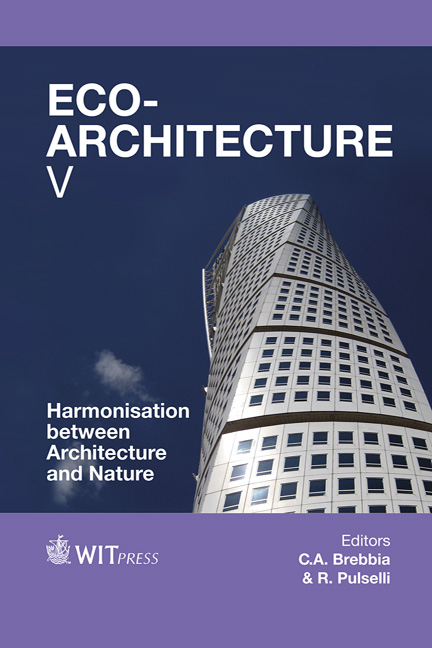Improving The Aesthetics Of Photovoltaics In Decorative Architectural Glass
Price
Free (open access)
Transaction
Volume
142
Pages
12
Page Range
385 - 396
Published
2014
Size
1,565 kb
Paper DOI
10.2495/ARC140331
Copyright
WIT Press
Author(s)
D. A. Hardy, S. C. Roaf, B. S. Richards
Abstract
Increasing colour variety in photovoltaics can improve the uptake of this renewable technology, which is vital to the creation of sustainable architecture. However, the introduction of colour into photovoltaics often involves increased cost and decreased efficiency. A method was found to add colour to photovoltaics, using luminescent materials: fluorescent organic dyes (BASF Lumogen). These selectively absorb and emit light, giving a good balance between colour addition and electricity production from underlying photovoltaic cells. Very small amounts of Lumogen dye were added to a silicone encapsulant (Dow Corning Sylgard 184), which was then used hold photovoltaic cells in place between sheets of painted glass. When making sufficient quantities of dyed encapsulant for a 600 x 450 mm testpiece, the dye colours faded, with low levels of fluorescence, although some colour was retained. Improvement of the method, including testing of alternative encapsulant materials, is required, to ensure that the dyes continue to fluoresce within the encapsulant. Although the Lumogen dyes are quite stable when compared to other dye molecules, in general organic dyes are not yet sufficiently durable to make this technology viable for installations that are to last for more than 20 years: the guaranteed lifetime of standard photovoltaic modules. Dye replenishment, or replacement of materials, will be required; or a product with a shorter ‘useful’ lifetime identified. This method opens up a wide variety of architectural glass design opportunities that incorporate photovoltaics, providing an example of one new medium to make eco-architecture more aesthetically pleasing, whilst generating electricity.
Keywords
photovoltaics, colour, encapsulant, Sylgard 184, architectural glass, luminescent, fluorescent organic dye, Lumogen dye, net-zero-energy building, sustainable





